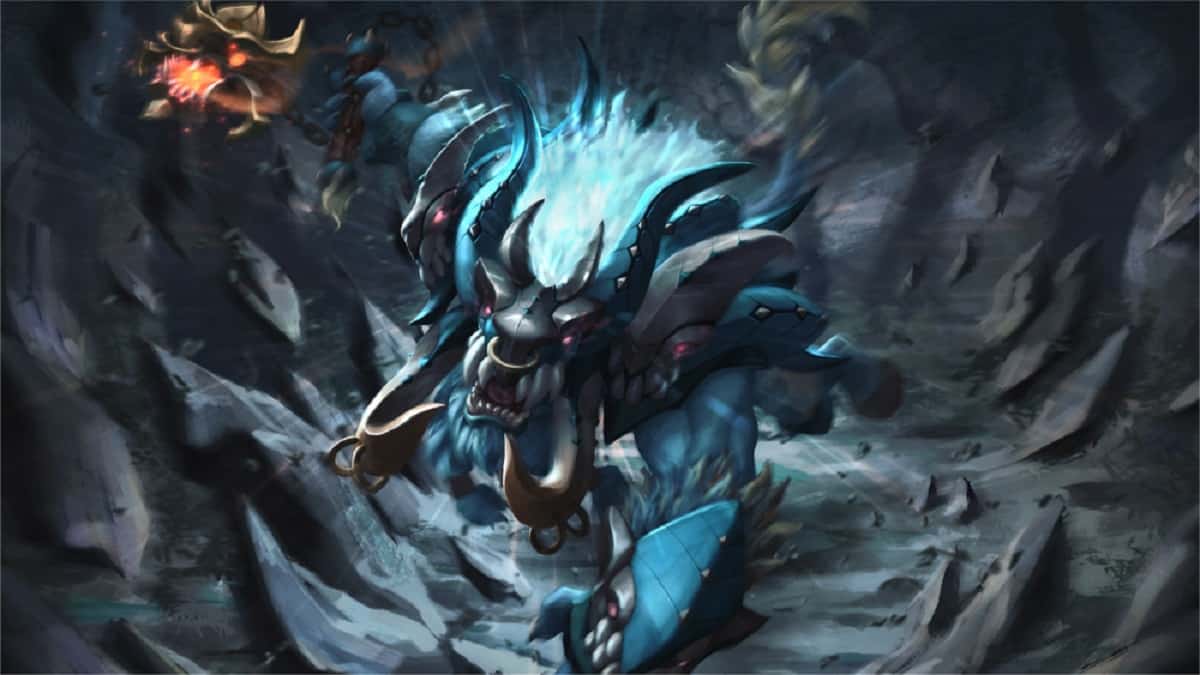

For a long time Dota 2 fans have prided the game as having a much more dynamic metagame than other Dota-like titles. At The International 10 all but seven eligible heroes received either a pick or ban during the draft phase. All but eight heroes were actually played, indicating some form of theoretical viability. If we expand the scope to include the TI 10 qualifiers, which helped form a large part of the TI 10 meta, there was a single hero that was never targeted across all six regions of play.
Barathrum, the Spirit Breaker, was added to Dota 1 in patch 6.07, released in 2005, and holy cow does it show (no pun intended). Over the last 16 years, Spirit Breaker’s core identity as a hero has remained almost completely unchanged. First, you throw your body into the fray while pinging wildly in an attempt to encourage teammates to follow up after you. Then you slam your face on the keyboard activating Bulldoze and Nether Strike while hoping your teammates did indeed follow your crazed aggression. After that it’s a matter of clicking on enemy heroes, praying for a bash and hoping that you judged the strength of your teammates versus that of the enemy team correctly.
Now obviously, Spirit Breaker aficionados will contest the simplicity of the Space Cow. There is certainly opportunity for nuance in how you chain your stuns or line up a Charge of Darkness for maximum impact. However, it’s hard not to feel just how much of a team game Dota 2 is when playing Bara. Without a good farming mechanic (not that he scales particularly well anyway) or enough damage to get solo kills, playing Spirit Breaker puts the outcome of the game squarely in the hands of your allies.
This is not inherently a bad thing. Afterall, Dota 2 is a game about team strategy and coordination. Spirit Breaker thrives when paired with specific heroes that can enable or take advantage of his impact. The bigger issue is that Spirit Breaker is a one-dimensional hero that also has a one-dimensional play style. Unlike another classic roaming hero Tusk, Spirit Breaker will be tasked with charging in to start a fight regardless of how far ahead or behind his team is. Tusk, on the other hand, can achieve game-changing impact in both aggressive and supportive roles. For further contrast, look no further than Marci who was playable in all five roles and with a variety of item builds upon release.
Despite this notable drawback, Spirit Breaker’s stats in public matchmaking paint a different picture than the one told at TI10. Currently, the hero has seen increasing popularity and win rate, especially at higher MMRs. Even leading up to TI10, Spirit Breaker maintained a very steady 50% win rate with a reasonably high pick preference. Since the post-TI patch where Spirit Breaker received very minor buffs to his stats and damage output, the hero has continued to climb in both popularity and win percentage.
This presents us with an interesting question. Did the entire professional community overlook Spirit Breaker? It is highly unlikely that patch 7.30e did enough to truly change the hero’s trajectory. This would mean that Barathrum was already a playable hero and was either forgotten about or simply could not fit properly into a strong strategy. Either way, it points towards the unappealing nature of inflexible, one-dimensional heroes.
In the context of a pro game Spirit Breaker is a bit like that one tool you buy to do one specific job and then leave in the box for the next twenty years. Dota has always been a game about adaptation and the heroes that can fill a variety of jobs tend to be the ones that win the most tournaments. However, for the rest of us Spirit Breaker is an enjoyably simple way to punish the poor coordination and positioning of the average pub game.
Gaming Website :https://rebrand.ly/mx2gyp9